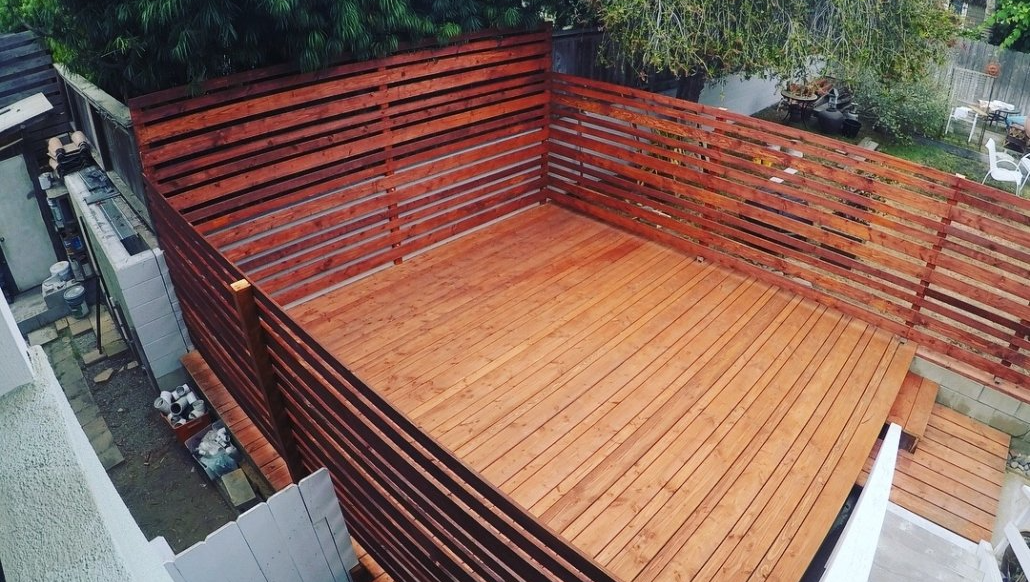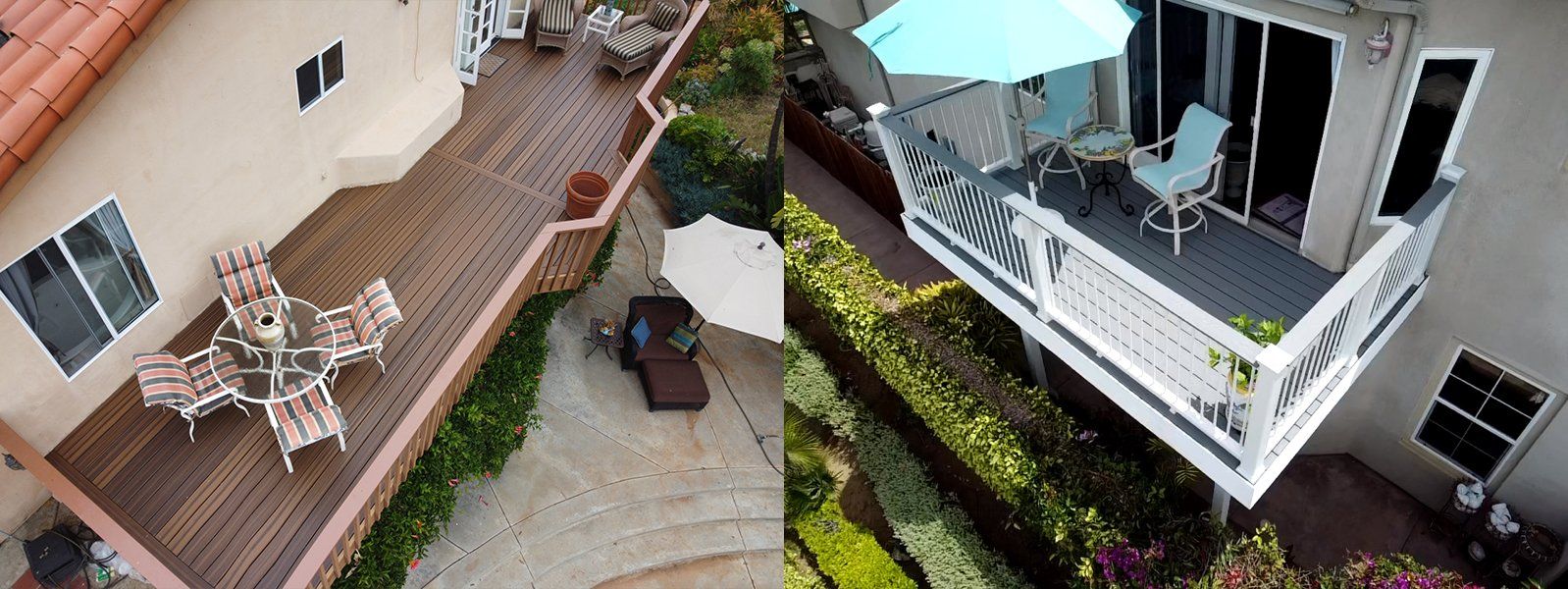Wood railing, composite wood railing, cable railing….SO MANY OPTIONS. If you find yourself feeling even more overwhelmed now than you were before when it came to deciding whether to choose envision, AZEK, or trex decking, never fear! For another informative blog post is here!
When it comes to fine tuning your dream deck vision even more, the options that arise from the shadows when it comes down to the fine details (i.e. the subject of today’s post, railing), may cause even more of a stress headache. There is wood railing, composite wood railing, AND cable railing. So let’s break it on down to make life much much easier for you.

Wood Railing
Wood railing is just like it sounds, its just basic wood railing. Just like having a basic wood deck the railing itself has to be kept up as well to avoid splinters and fading and whatnot. Wood railing is also prone to damage from pests, just as it’s cousin (wood decking) is. Aside from the general upkeep, the aesthetic can be pleasing to the eye if a cabin in the woods aesthetic is the look one is going for. The general cost for wood railing is generally lower also, depending on the type of wood it is that one is purchasing as well as if the installation/execution will be diy or professionally installed by a contractor.
Composite Wood Railing

Composite deck railing is railing that is made from the same material as your composite deck. Just like the composite wood decking, composite wood railing is low maintenance and is resistant to pests and splintering. If a modern yet rustic aesthetic is the look one is going for, composite wood railing in the way to go. The cost is a bit pricier than its basic wood counterpart, again depending on the type and if installation is diy or installed professionally by a general contractor.
Cable Railing

When it comes cable railing, there are a couple options to consider. Wood cable railing and composite wood cable railing (depicted above). Cable railing in general gives a much more modern look to your outdoor space, is made from galvanized steel which is rust resistant, and can also give a more panoramic view of the scenery whereas with wood railing (composite or real wood) can obstruct the view because of the slats. Cable railing has a much more clean look to it and requires minimal maintenance, depending on the option one decides to go with. If a rustic mixed with modern aesthetic is the style of choice, the basic wood cable railing is the way to go. Though the wood will require the same maintenance as complete wood railing or decking (i.e. sanding, staining, etc.) so the wood portion of the railing does not splinter or completely fade/rot. Composite wood cable railing however gives a complete modern look for any outdoor space, and the wood will last for a very long time and not splinter or fade. The cost overall is much higher, due to the wood choice, cable, and installation (which is recommended to be done by a license professional), but the cable railing system will last much longer and saves money in the long run.
So what’s the best?
To answer such a question with one particular answer wouldn’t do the subject justice. It all depends on budget, time allocated for maintenance, and the space/style you have. Whether you choose wood, composite wood, or cable railing to help make your vision a reality, there are no wrong choices when it comes to the terms of YOUR dream deck.



